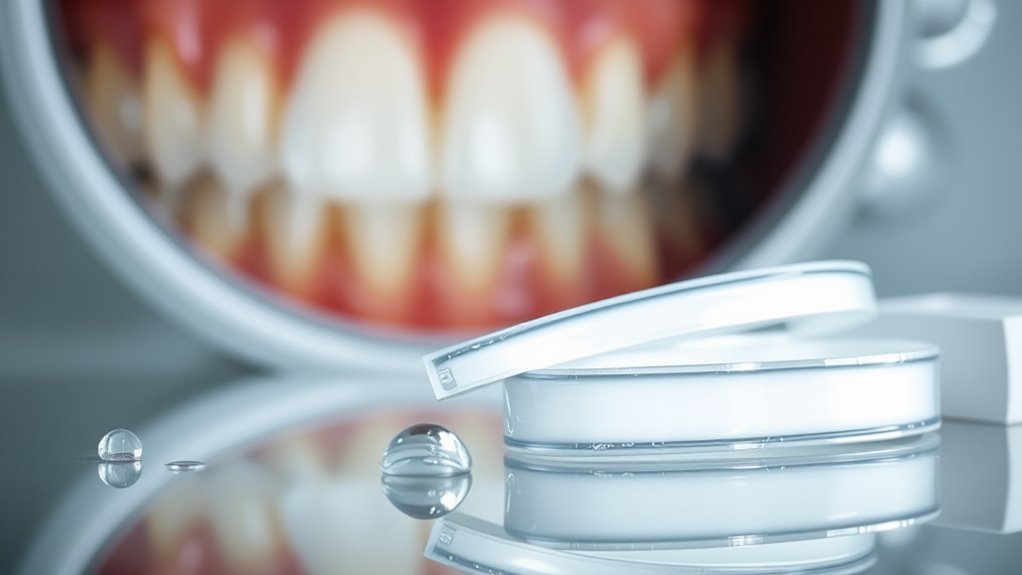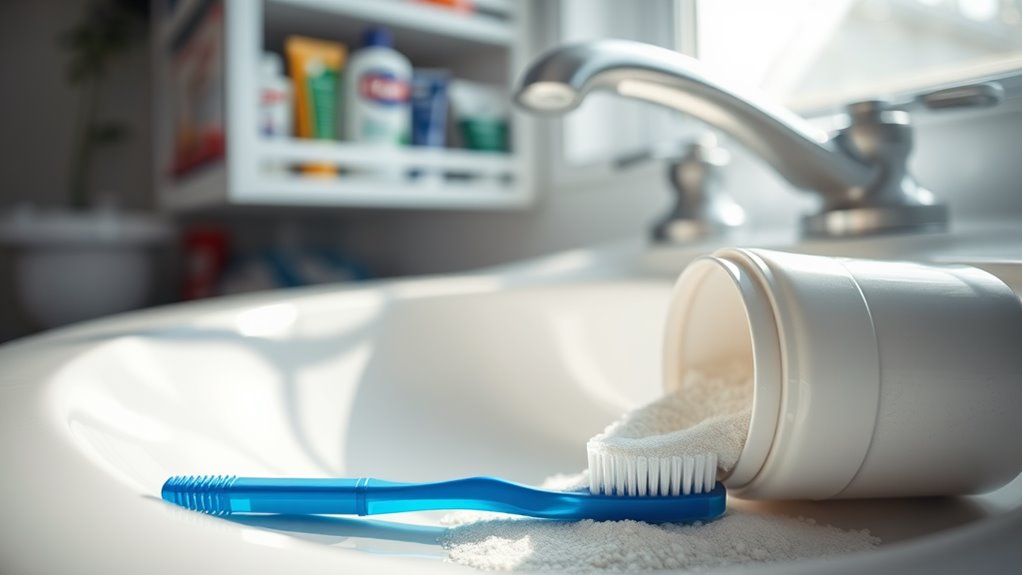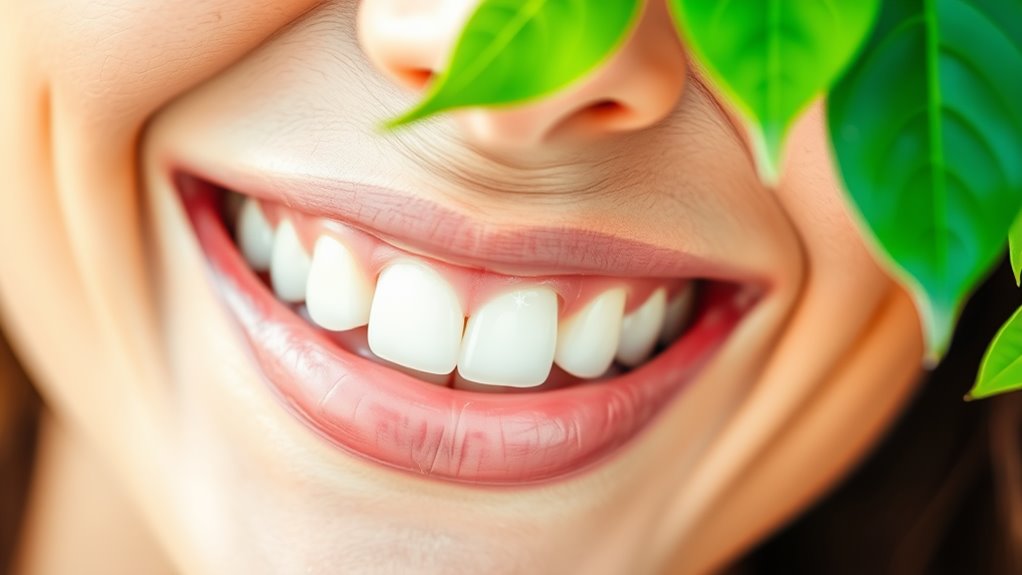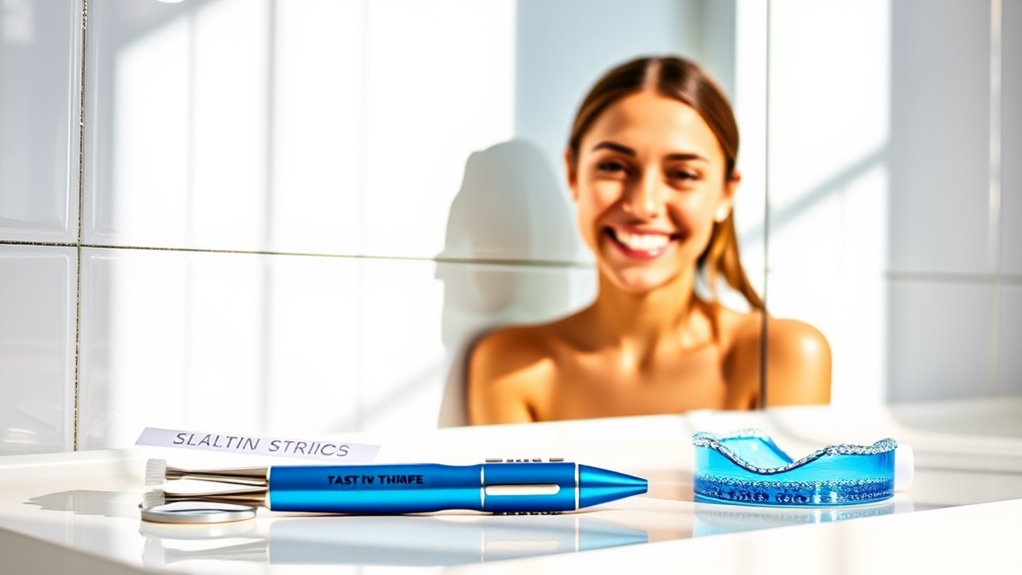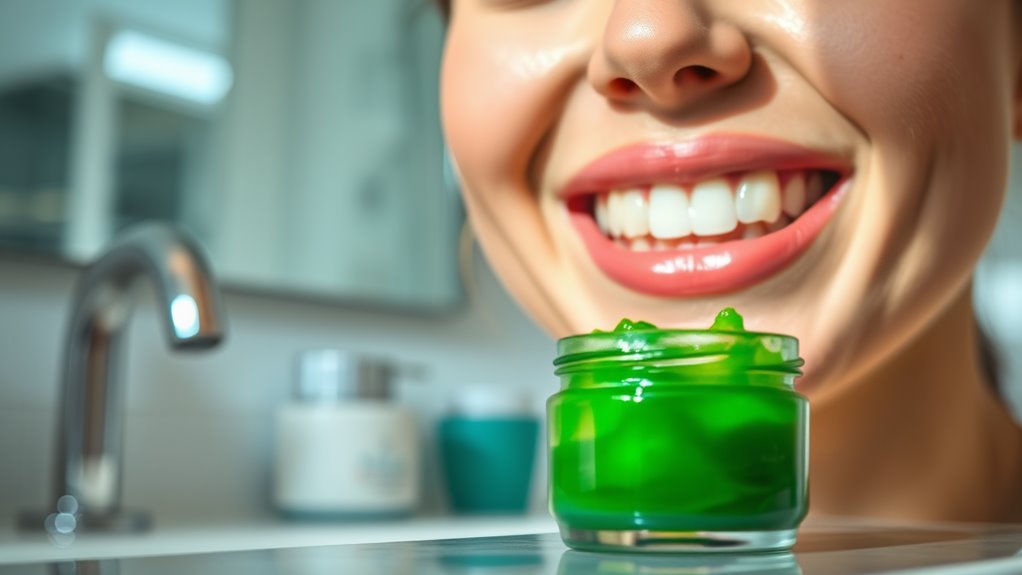Why Whitening Strips Might Be Damaging Your Teeth!
You might think whitening strips are a quick fix for a brighter smile, but they can actually harm your teeth. The chemicals in these strips, especially hydrogen peroxide, can erode enamel and lead to increased sensitivity. Plus, they can irritate your gums, causing discomfort and potential infections. It’s important to weigh the risks against the benefits. What safer options are out there that can help you achieve the smile you want without the damage?
The Impact of Whitening Strips on Tooth Enamel
While you might be eager to achieve a brighter smile with whitening strips, it’s essential to consider how they affect your tooth enamel. Many people overlook the whitening strip risks, focusing solely on the promise of whiter teeth.
These strips often contain harsh chemicals that can wear down your enamel over time. When enamel thins, it not only exposes the sensitive layers beneath but can also lead to discoloration and increased vulnerability to decay.
You want to feel confident in your smile, but that confidence shouldn’t come at the cost of your dental health. Instead of jumping straight into whitening strips, consult with your dentist about the best options for achieving that dazzling smile.
They can help you weigh the benefits against the potential whitening strip risks, ensuring you make an informed choice that keeps both your teeth and your smile looking their best for years to come. Additionally, it’s crucial to listen to sensitivity signs after using these products, as they may indicate underlying enamel issues.
Increased Tooth Sensitivity: A Common Side Effect
Using whitening strips can lead to increased tooth sensitivity, a common side effect that many users experience.
You might notice a sharp ache when you consume hot or cold foods and drinks, which can be both uncomfortable and frustrating. This heightened sensitivity can stem from the active ingredients in the strips, which may penetrate your enamel and irritate the nerves inside your teeth.
You’re not alone if you’ve felt this way—many people share your experience.
It’s important to listen to your body and recognize when discomfort arises. If sensitivity becomes too bothersome, consider scaling back on how often you use the strips or opting for a gentler whitening method. Seeking professional help can ensure that any underlying issues are addressed while you pursue a whiter smile.
You deserve to feel confident in your smile without sacrificing comfort. Engaging with others who’ve faced similar issues can provide support and helpful tips on managing sensitivity while still achieving that bright smile you desire.
Damage to Gum Tissue and Oral Health
Although whitening strips can effectively brighten your smile, they may also pose risks to your gum tissue and overall oral health. Many people overlook the potential harm these strips can cause, leading to discomfort and complications.
Here are a few things to consider:
-
Gum Irritation: Prolonged exposure to the whitening agents can irritate your gums, causing redness and swelling.
-
Chemical Burns: If the strips come in contact with gum tissue, they can lead to painful chemical burns that may take time to heal.
-
Increased Risk of Infection: Damaged gum tissue can open the door to infections, putting your oral health at serious risk.
Furthermore, vitamin deficiencies can also exacerbate gum issues, making it crucial to maintain a balanced diet for optimal gum health.
It’s essential to prioritize your gum health while aiming for a whiter smile.
Before using whitening strips, consult your dentist to ensure you’re making a safe choice for your beautiful grin. Your smile deserves the best care!
The Role of Hydrogen Peroxide in Whitening Strips
Hydrogen peroxide plays a crucial role in the effectiveness of whitening strips, as it’s the primary bleaching agent responsible for lightening tooth enamel. When you apply these strips, hydrogen peroxide penetrates your enamel, breaking down stained molecules and giving you that bright smile you crave.
However, you should be aware that this powerful ingredient can have its downsides. While it can effectively whiten your teeth, excessive use can lead to enamel erosion and increased tooth sensitivity. You might find yourself caught in a cycle of trying to achieve the perfect shade, but overusing these strips can compromise your dental health and leave you feeling more frustrated than satisfied.
It’s essential to approach whitening with care, so you can enjoy your beautiful smile without risking damage. Staying informed about what you’re putting on your teeth will help you make choices that align with both your aesthetic goals and your overall dental well-being. Additionally, consider exploring gentler alternatives that promote dental health while brightening your smile.
Safer Alternatives for Achieving a Bright Smile
If you’re looking for a bright smile without the risks associated with whitening strips, there are several safer alternatives to consider.
These options not only enhance your smile but also promote overall dental health, helping you feel confident and part of a community that values self-care.
-
Whitening Toothpaste: Formulated with gentle abrasives and mild whiteners, these toothpastes can gradually brighten your teeth without harsh chemicals.
-
Natural Remedies: Ingredients like baking soda or activated charcoal can help lift stains. Just remember to use them sparingly to avoid enamel damage.
-
Professional Dental Cleanings: Visiting your dentist for regular cleanings can remove surface stains and keep your teeth healthy, giving you that naturally bright smile you desire. Additionally, incorporating calcium-rich foods into your diet enhances tooth strength and overall dental health.
Embrace these safer alternatives and enjoy the journey to a healthier, radiant smile that you can proudly share with others!
